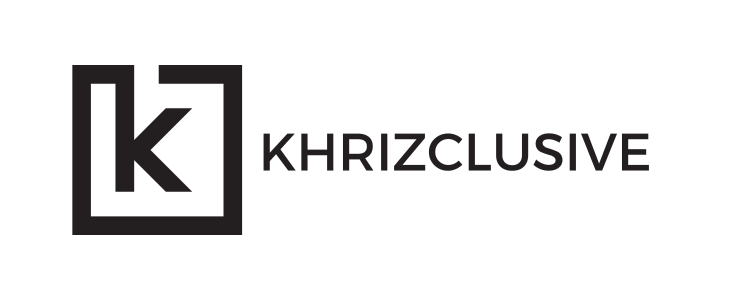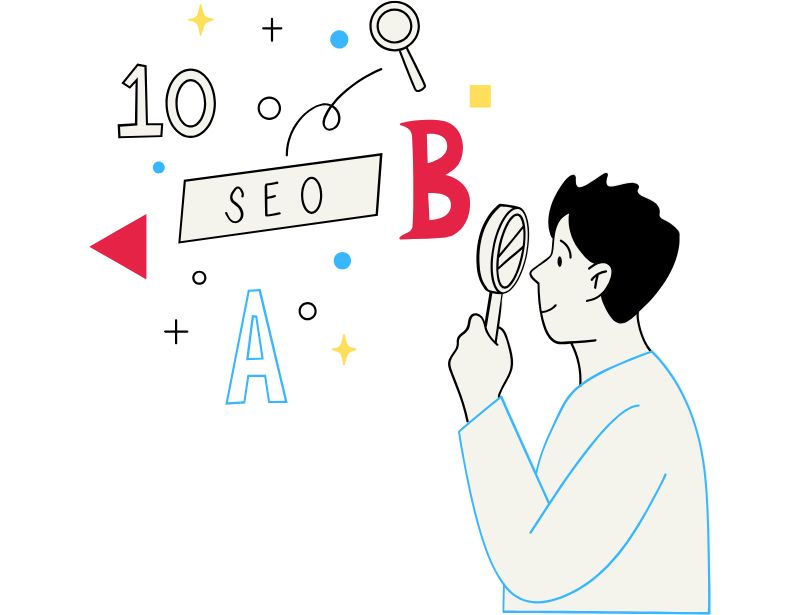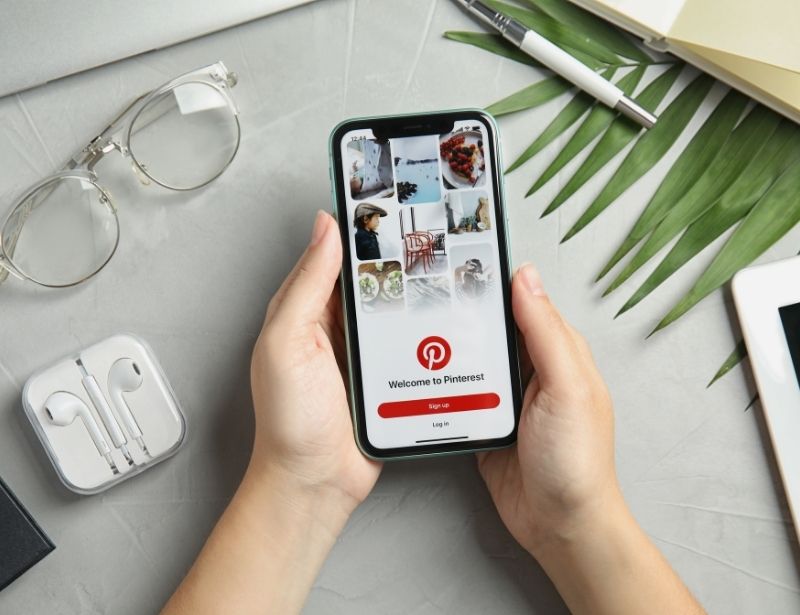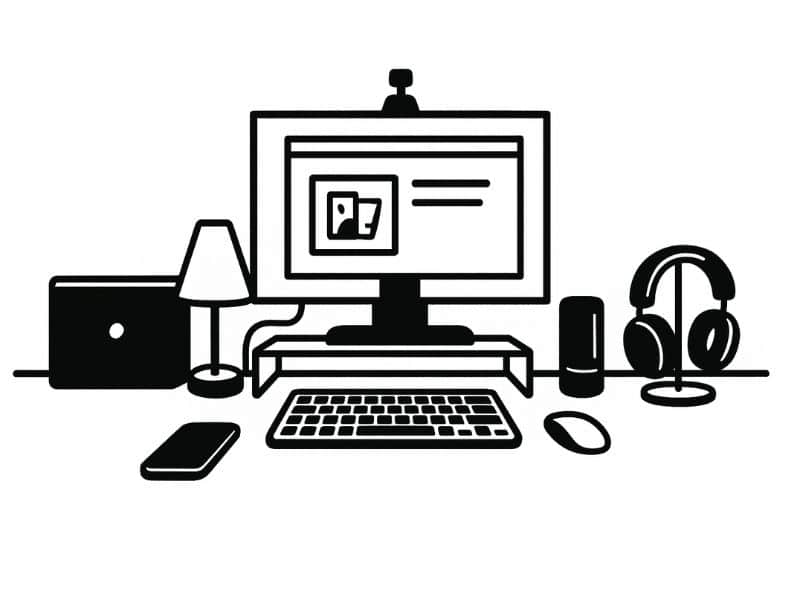The honest guide to making your content matter in a platform drowning in DIY mason jars and “manifestation boards.”
Let’s get one thing straight:
Pinterest isn’t a social media platform. It’s a search engine with better taste.
And if you’re still treating it like Instagram with mood boards, you’re not just behind, you’re invisible.
And with the recent Google changes, it’s hard to rely solely on your traffic to it. You need to diversify.
1. How Pinterest Works
Most creators treat Pinterest like a digital vision board where you pin some cute things and hope the algorithm finds you charming.
That’s not strategy, that’s scrapbooking.
Pinterest runs on a recommendation system that doesn’t give a damn about when you posted or how many followers you have. It cares about:
- Saves
- Relevance (keywords), and
- Engagement, not the fake hype.
This means your Pin from two months ago can outrank your latest hot take.
Because Pinterest isn’t building a feed, it’s for curating inspiration.
2. The 5 Content Types
Before you start throwing Canva templates at the wall and hoping for a repin, know your formats:
Static Pins
Your classic vertical visuals. Think “recipe card,” but chic. These still work if you treat them like visual headlines, not stock image spam.
Video Pins
Short. Punchy. Hook in the first two seconds. Think of TikTok videos, Instagram Reels, or YouTube Shorts.
Idea Pins
Pinterest’s answer to Instagram Stories. This was later combined with Video Pins. So don’t be confused when someone tells you Idea Pins, it’s just Video Pins.
Product Pins
Sell something? These pins link directly to your store. Use them. Most people won’t. This is the untapped potential for marketers of Pinterest.
Collage Pins
This is something new (well, sorta new). Ideal for product Roundups, Moodboards, Tutorials or Recipes, Outfit collections, etc. You see where I’m going here?
3. The Anatomy of a High-Performing Pin
Want to know why your Pins aren’t getting seen?
Because they look like a stock photo threw up on a quote graphic.
Here’s what gets saved, clicked, and shared:
- Vertical, high-res images (1000 x 1500 px — non-negotiable).
- Text overlay with a hook. Think: “7-Minute Meals Even Your Date Won’t Hate.”
- Clean design. No clutter. No weak fonts. Based on experience,
- Keyworded Pin title + description. (If you know SEO, this is easy)
Pinterest doesn’t read your mind. It reads your metadata.
4. Pinterest’s Algorithm: Engagement > Virality
Let’s kill the dream: You’re not going viral on Pinterest.
Why? Because viral is TikTok’s thing. Pinterest plays the long game.
The algorithm promotes pins with consistent, meaningful engagement, and not one-night-stand metrics like likes or views.
You want:
- Saves (top signal of “I’ll use this later”)
- Click-throughs (because you gave them enough value to leave Pinterest)
Forget gaming the system. Just create pins that are so damn useful and good-looking they deserve to win.
5. How Often Should You Post?
Let me say the quiet part out loud:
You don’t need to post 100 pins every day. You need to post intentionally.
Pinterest is evergreen. That means your content lives longer than a TikTok trend and can snowball months later, as long as it’s optimized.
Best cadence for beginners:
1 pin per day or 5 quality Pins per week. Bonus points if you batch them using Tailwind or Pinterest’s native scheduler.
More than that? Cool, but don’t sacrifice quality for quantity. No one wants 12 garbage Pins a day just so you can feel productive.
6. Metrics That Matter (And What to Ignore)
Most creators obsess over impressions like it’s a popularity contest. It’s not. It’s business.
Here’s your new KPI stack:
- Saves
- Outbound clicks
- Engagements
Watch these inside Pinterest Analytics. Skip the vanity metrics unless you’re running a brand collab and need to sell the dream.
Also, track which boards are driving traffic. If one board is outperforming others, double down. It’s not about Pin volume, it’s about Pin placement.
7. Common Pinterest Mistakes That Make You Invisible
Let’s talk self-sabotage. Here’s what kills momentum faster than a fake urgency timer:
- Posting square or horizontal images. This could work, but most pins that perform well on Pinterest are built vertically. Respect the architecture.
- Using weak or no keywords. Pinterest is a visual search engine. Keywords are as important as your design.
- Reposting the same Pin 30 times is a lazy Pinner. Pinterest calls it “spammy.”
- Ignoring titles and descriptions. If your Pin is nameless, it’s worthless.
- No branding. No logo. No voice. No identity. No chance.
Your pins should whisper “This is me,” even if your name isn’t on it.
TL;DR: Make It Strategic
If you’re still treating Pinterest like a passive place to dump content, you’re not in the game, you are treated like your crush who doesn’t even know you exist.
But if you start treating it like a visual Google with an emotional engine, then you’re playing to win.
Create with intention. Design for saves. Write for search.Build for longevity.
Now what?
Save this post.
But the next time you open Pinterest, look at your feed like a tactician, not a trend follower.
And if you’re ready to build visibility that doesn’t disappear in 24 hours?







